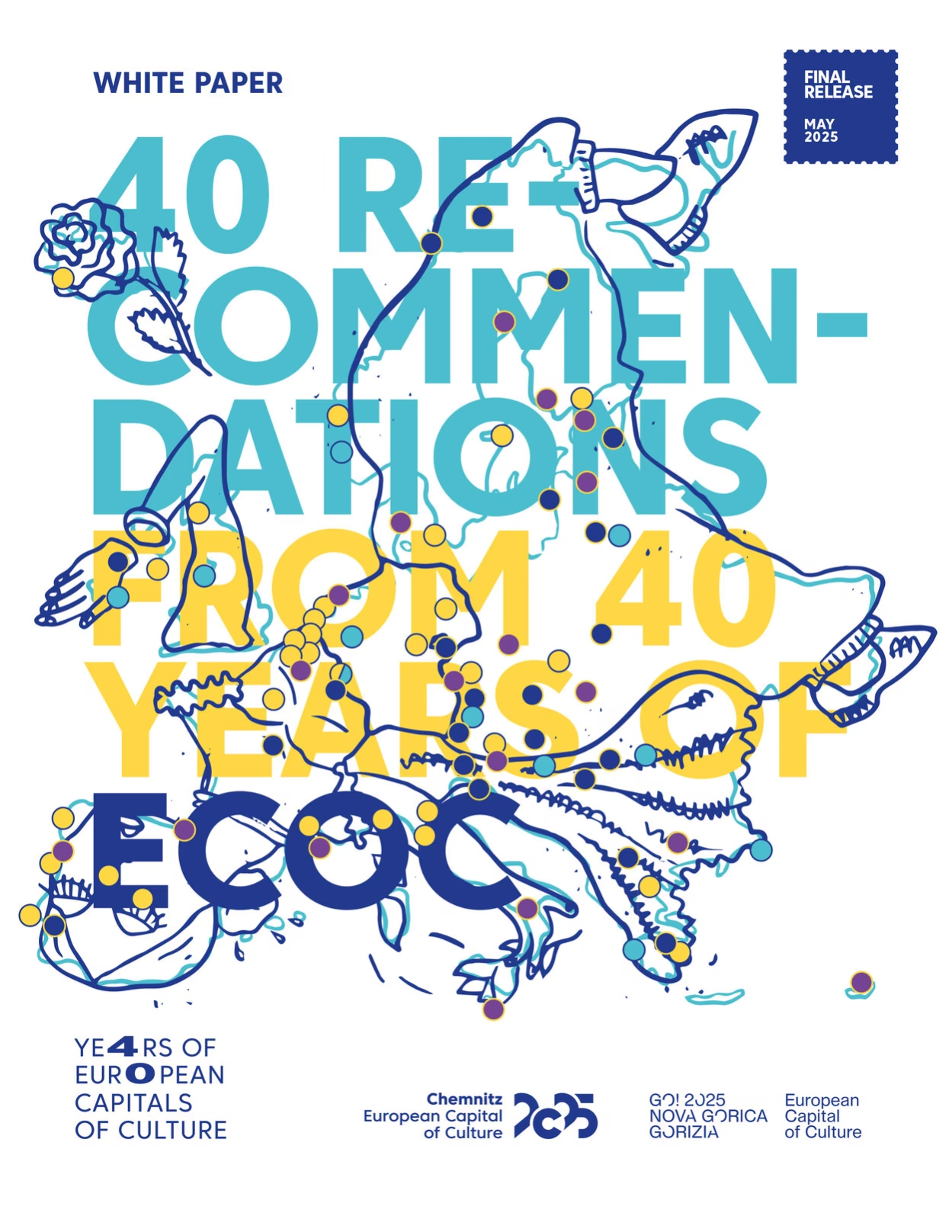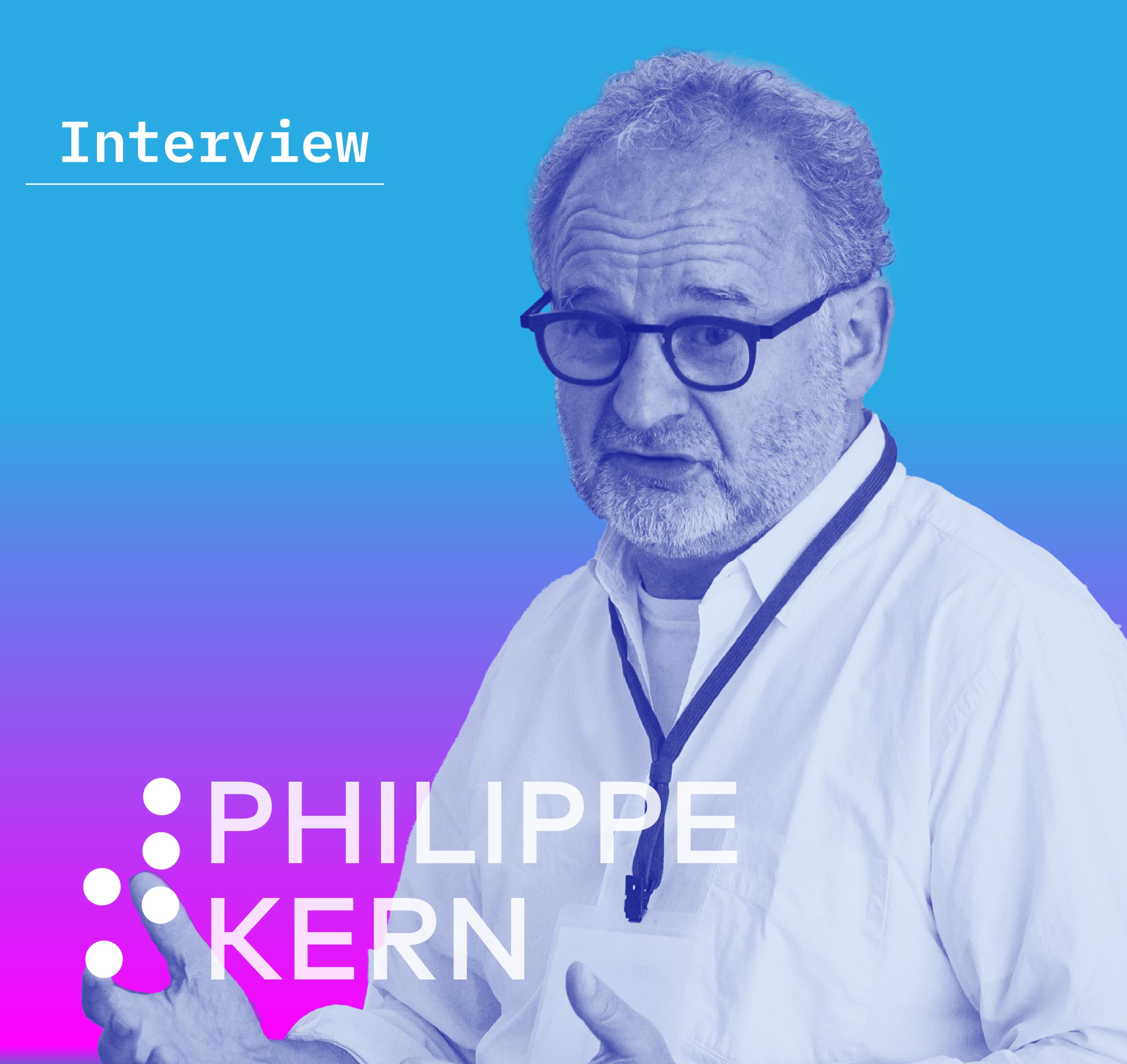We met Valentina Montalto, lead researcher of the recently unveiled study on the European Capital of Culture action-timely and highly relevant as the EU moves forward with plans to revise the legal framework governing the initiative from 2034 onwards.
As part of the 40th anniversary of the European Capitals of Culture (ECoC) initiative, on May 13, 2025, the researcher Dr. Valentina Montalto presented the Chemnitz White Paper at the European Parliament in Brussels. The White Paper is the result of an in-depth study, drawing on insights from the managers and artistic directors of 64 past and upcoming European Capitals of Culture out of the 82 which have been awarded the title since 1985. It offers concrete recommendations for the future evolution of the action, especially relevant as the EU prepares to update the legal basis of the action from 2034 onwards. To delve deeper into the research process and its key findings, we spoke with Dr. Montalto, who led the expert team behind the study.
You’ve just returned from Brussels where you presented a significant report. Can you tell us more about the initiative and what makes it special?
Yes, we’ve just presented a White Paper at the European Parliament, during an event marking the 40th anniversary of the initiative. While the event was supported by several Members of the European Parliament, the initiative itself came from the cities of Chemnitz (Germany) and Nova Gorica (Slovenia), which as you know in 2025 hold the title of European Capital of Culture.
That’s what makes this document so unique, two medium-sized cities took it upon themselves to launch a structured and independent reflection on the future of the action at the European level. It was a bold move, especially considering the scale of the initiative and the cities’ relatively limited resources compared to larger, capital cities.
The idea originated from their desire to celebrate this anniversary not just symbolically, but by building a meaningful and lasting legacy. This is a clear example of bottom-up policy co-design—an independent initiative that forms part of Chemnitz 2025´s Legacy Programme.
Tell us a bit more about the research, what were the main goals and outcomes?
The aim of the research is to make the 40th anniversary much more than a symbolic celebration and make a meaningful, forward-looking contribution to the future of the European Capitals of Culture action. Chemnitz, in cooperation with Nova Gorica, recruited an independent research team to harness the “collective intelligence” behind this action: the lived, often tacit knowledge accumulated over 40 years by those who have personally managed European Capitals of Culture.
The research team I led included two Italian researchers – Camilla Donà dalle Rose and Roberta Ferrarini – as well as Slovenian scholar Dr. Mojca Stubelj Ars and Mattijs Maussen as impact & Concept Lead. We also benefited from the scientific guidance of Pierluigi Sacco, and the lead of Anely Šmída Jeromin as Project Coordinator.
Over the course of the study, we conducted in-depth interviews with representatives from 64 of the 82 cities that have held or are scheduled to hold the title between 1985 and 2029. Our approach was primarily qualitative, relying on in-depth conversations to capture insights that often remain undocumented. But we also applied a rigorous system of coding to map recurring patterns and extract shared recommendations. One of the most innovative elements of our methodology was the development of a structured database of recommendations.
We classified each recommendation by its potential implementation instruments—distinguishing between those that would require legislative changes to the EU legal basis and those that could be addressed through operational or policy adjustments. This approach enabled a more precise understanding of how each idea could be realistically implemented within the EU’s decision-making architecture.
Among the most significant and forward-thinking recommendations is the call to reinforce the European dimension of the initiative by embedding it across all selection criteria, rather than limiting it to a single category.
The research also proposes streamlining the selection process—such as replacing the second site visit with a focused technical fact-check—and strengthening impact through the development of two dedicated handbooks: one to guide the bidding process and another for ex post evaluation, featuring harmonised methodologies for data collection and analysis.
A key innovation is the suggestion that the same experts involved in the selection phase through the fact-checking also participate in the final evaluation, allowing for the collection of baseline data from the outset and ensuring greater consistency and comparability over time. Additionally, the report urges a shift in how the European dimension is assessed—not just by the number of cross-border collaborations, but by how much of the overall budget is actually allocated to them—offering a more accurate reflection of the action’s international scope and commitment to European cooperation. However, the challenge remains that many cities still struggle to collect and share data in a systematic way.
How has the research been received politically?
There has been strong political interest in the research, largely because it originates from within the operational community of the European Capitals of Culture and offers concrete, actionable tools to improve its impact. Rather than replacing existing evaluations, such as those by the European Commission or networks like Culture Next and Eurocities, this work aims to complement them, bringing a hands-on, practitioner-driven perspective that highlights both what is working and the needed legislative and policy improvements.
The exact reference to articles to be amended in the legal basis makes this Paper a benchmark for future research, as highlighted by our interlocutors within EU institutions. At the same time, the initiative is still in the early stages of political engagement. The presentation at the European Parliament marked an important milestone, but its long-term influence will depend on how individual Member States respond and on the outcomes of the upcoming Council meeting in July. We are now planning two additional dissemination moments. The first is to secure a place within at least one more Council Presidency—ideally the one following the Danish Presidency—since that is where the decisive battles for potential reforms are fought. And the second is a presentation to the Committee of the Regions, which can offer a more territorial and practical perspective.
The goal is for this White Paper to become a useful tool in shaping the ongoing debate and laying the groundwork for a more informed and inclusive revision of the action. The Commission will start drafting the new rules later this year. The adoption is expected by 2027. The broader political landscape remains challenging—with tightening budgets, increased focus on defence spending, and shifting policy priorities threatening to sideline culture.
In this context, reaffirming the strategic value of the European Capitals of Culture is not only timely but essential for shaping an inclusive future for Europe that builds on shared and widely supported cultural narratives.
Was there anything that particularly struck you—something you haven’t yet had the chance to share—regarding the findings of the report?
One thing that really stood out to me was the strong desire for continuity from those who’ve been involved in the European Capitals of Culture. People care deeply about this initiative and believe in its potential, but there’s also a widespread understanding that it needs real improvements if it’s going to stay meaningful. Even with all the challenges, there’s a real sense of dedication and belief in its ability to drive change.
The way people think about the initiative has evolved over time. In the early years, it was mainly about celebrating the arts and cultural diversity. But now, it’s seen much more as a strategic tool for transforming cities and regions. That shift—something we could symbolically link to cities like Matera—is now widely embraced by professionals. Everyone we spoke with made it clear that culture shouldn’t just mean summer festivals; it should be seen as a driver of long-term regeneration and structural change. At the same time, there was something unexpected.
Three themes that are key priorities for the EU—digital transition, green transition, and impact evaluation—barely came up in our conversations. If we’d only focused on what was mentioned by stakeholders, these issues would have hardly appeared in the report at all. That’s important—and a bit worrying—because it shows a gap between what’s happening at the EU level and what’s happening on the ground. Especially when it comes to impact evaluation, many people still see it more as a bureaucratic task than a real opportunity to learn and grow. If we want the action to keep moving forward and stay relevant in the years to come, this disconnect needs to be taken seriously.







